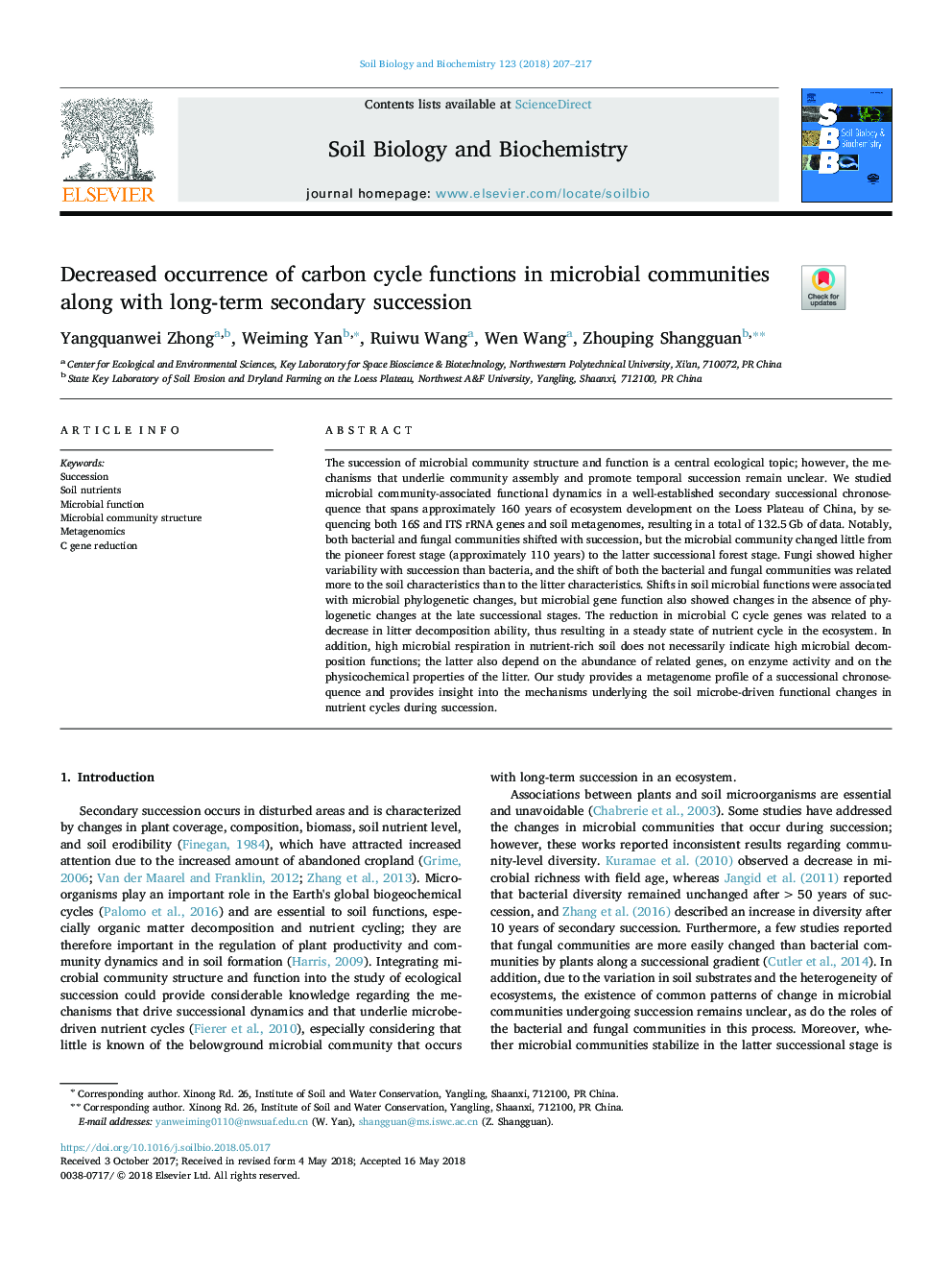| Article ID | Journal | Published Year | Pages | File Type |
|---|---|---|---|---|
| 8362682 | Soil Biology and Biochemistry | 2018 | 11 Pages |
Abstract
The succession of microbial community structure and function is a central ecological topic; however, the mechanisms that underlie community assembly and promote temporal succession remain unclear. We studied microbial community-associated functional dynamics in a well-established secondary successional chronosequence that spans approximately 160 years of ecosystem development on the Loess Plateau of China, by sequencing both 16S and ITS rRNA genes and soil metagenomes, resulting in a total of 132.5â¯Gb of data. Notably, both bacterial and fungal communities shifted with succession, but the microbial community changed little from the pioneer forest stage (approximately 110 years) to the latter successional forest stage. Fungi showed higher variability with succession than bacteria, and the shift of both the bacterial and fungal communities was related more to the soil characteristics than to the litter characteristics. Shifts in soil microbial functions were associated with microbial phylogenetic changes, but microbial gene function also showed changes in the absence of phylogenetic changes at the late successional stages. The reduction in microbial C cycle genes was related to a decrease in litter decomposition ability, thus resulting in a steady state of nutrient cycle in the ecosystem. In addition, high microbial respiration in nutrient-rich soil does not necessarily indicate high microbial decomposition functions; the latter also depend on the abundance of related genes, on enzyme activity and on the physicochemical properties of the litter. Our study provides a metagenome profile of a successional chronosequence and provides insight into the mechanisms underlying the soil microbe-driven functional changes in nutrient cycles during succession.
Related Topics
Life Sciences
Agricultural and Biological Sciences
Soil Science
Authors
Yangquanwei Zhong, Weiming Yan, Ruiwu Wang, Wen Wang, Zhouping Shangguan,
